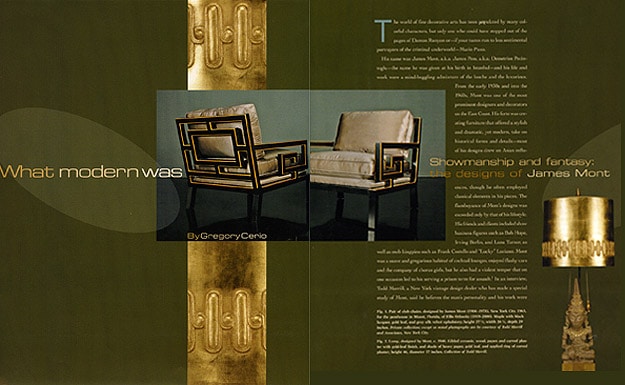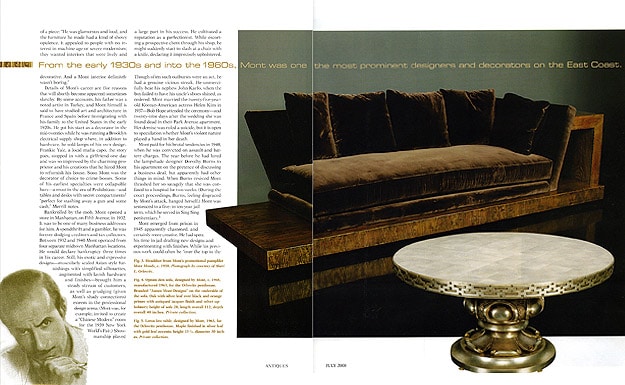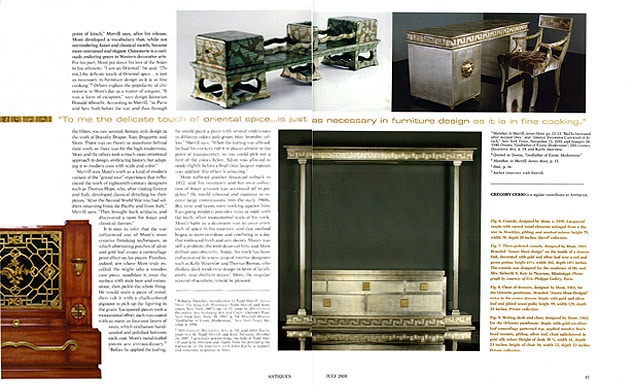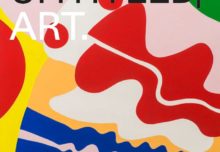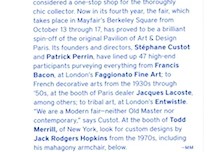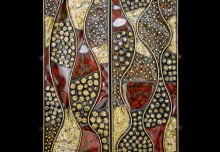The Magazine ANTIQUESWhat Modern Was: Showmanship and Fantasy: The Designs of James MontJuly 2008
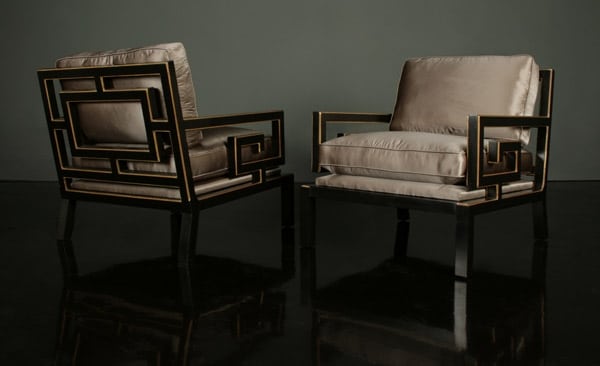
Fig. 1. Pair of club chairs, designed by James Mont (1904-1978), New York City, 1963, for the penthouse in Miami, Florida, of Ellis Orlowitz (1919-2000). Maple with black lacquer, gold leaf, and gray silk velvet upholstery; height 27 1/2, width 26 1/2, depth 29 inches. Private collection; except as noted photographs are by courtesy of Todd Merrill and Associates, New York City.
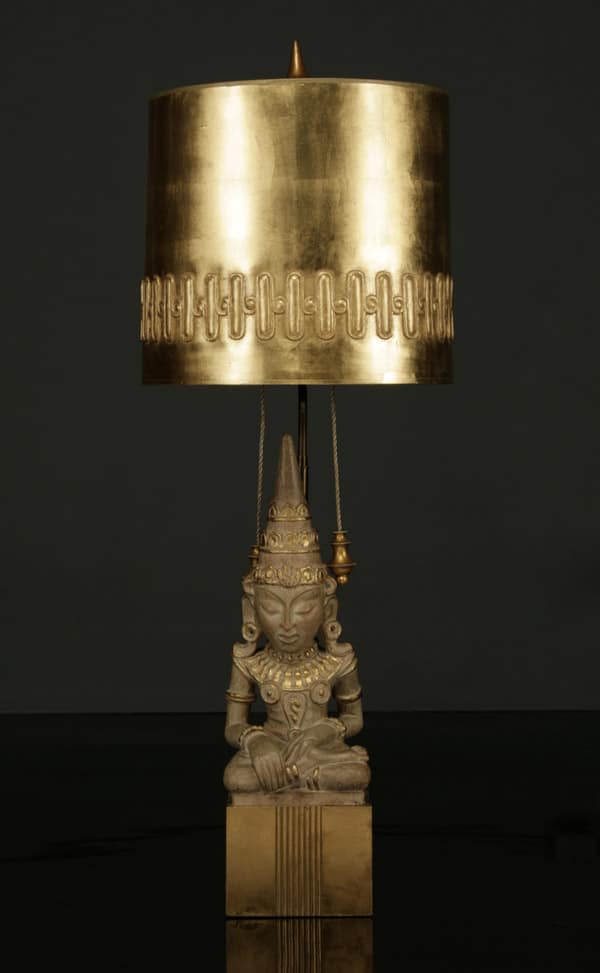
Fig. 2. Lamp, designed by Mont, c.1940. Gilded ceramic, wood, paper, and carved plaster with gold-leaf finish, and shade of heavy paper, gold leaf, and applied ring of carved plaster; height 46, diameter 17 inches. Collection of Todd Merrill.

Fig. 3. Headshot from Mont’s promotional pamphlet Mont Moods, c.1950. Photograph by courtesy of Sheri L. Orlowitz.

Fig. 4. Opium den sofa, designed by Mont, c. 1948, manufactured 1963, for the Orlowitz penthouse. Branded “James Mont Designs” on the underside of the sofa. Oak with silver leaf over black and orange primer with antiqued lacquer finish and velvet upholstery; height of sofa 28, length overall 112, depth overall 40 inches. Private collection.

Fig. 5. Lotus low table, designed by Mont, 1963 for the Orlowitz penthouse. Maple finished in silver leaf with gold leaf accents; height 15 1/2, diameter 30 inches. Private collection.
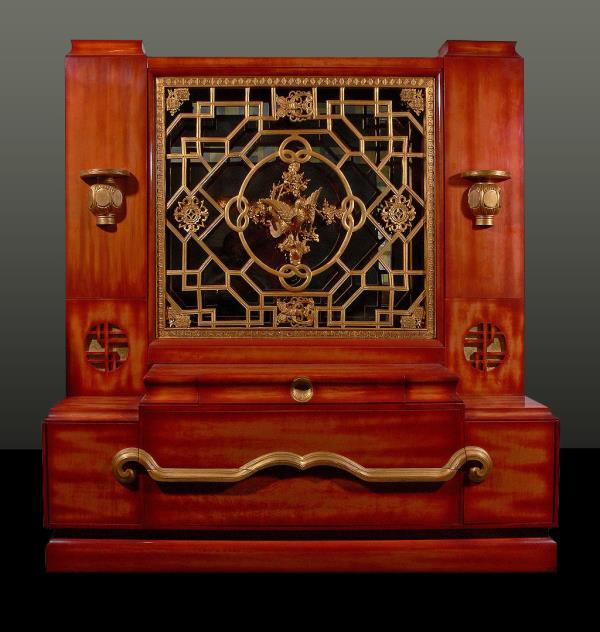
Fig. 6. Console, designed by Mont, c.1950. Lacquered maple with carved wood elements salvaged from a theater in Brooklyn, gilding, and smoked mirror; height 79, width 78, depth 20 inches. Merrill collection.

Fig. 7. Three-pedestal console, designed by Mont, 1951, Branded “James Mont design” on the inside of a drawer. Oak, decorated with gold and silver leaf over a red and green patina; height 21 1/2, width 102, depth 18 1/2 inches. The console was designed for the residence of Mr. and Mrs. Sieberth S. Kety in Picayune, Mississippi. Photograph by courtesy of Eric Philippe Gallery, Paris.
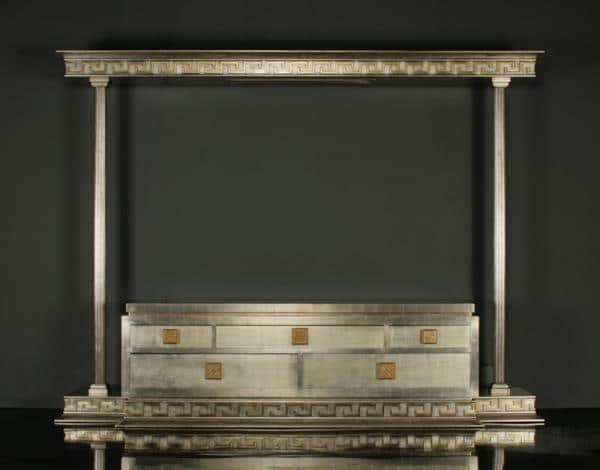
Fig. 8. Chest of drawers, designed by Mont, 1963, for the Orlowitz penthouse. Maple with gold-on-silver-leaf camouflage patterned top, applied wooden lion’s head mounts, gilding, silver leaf; chair upholstered in gold silk velvet. Height of desk 30 1/2, width 61, depth 23 inches; height of chair 36, width 22, depth 23 inches. Private collection.
Todd Merrill Studio
80 Lafayette Street
New York NY 10013
Phone: 212 673 0531
80 Lafayette Street
New York NY 10013
Phone: 212 673 0531
Todd Merrill Summer Studio
11 South Main Street
Southampton, NY 11968
Phone: 631 259 3601
11 South Main Street
Southampton, NY 11968
Phone: 631 259 3601


